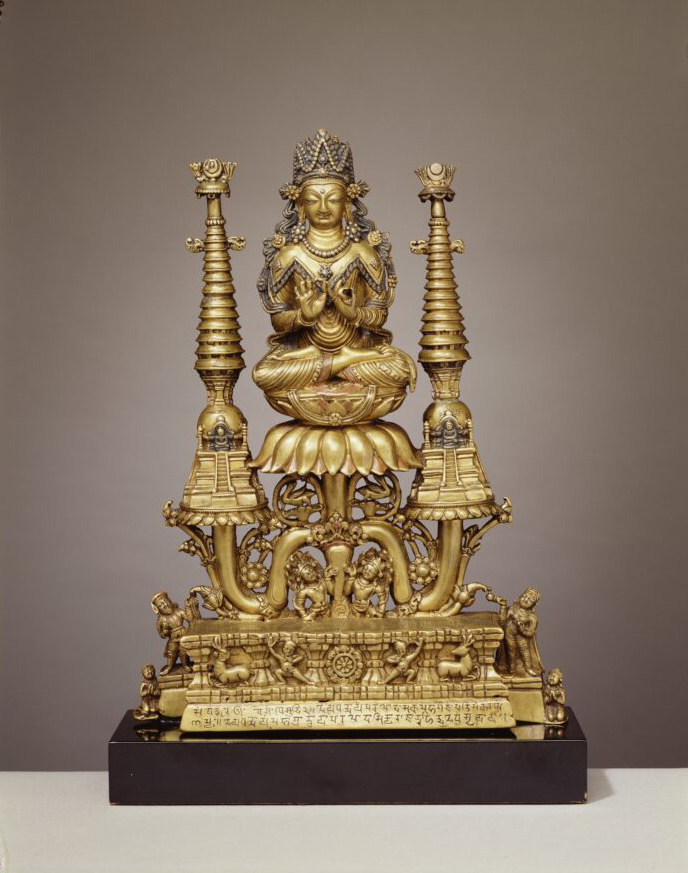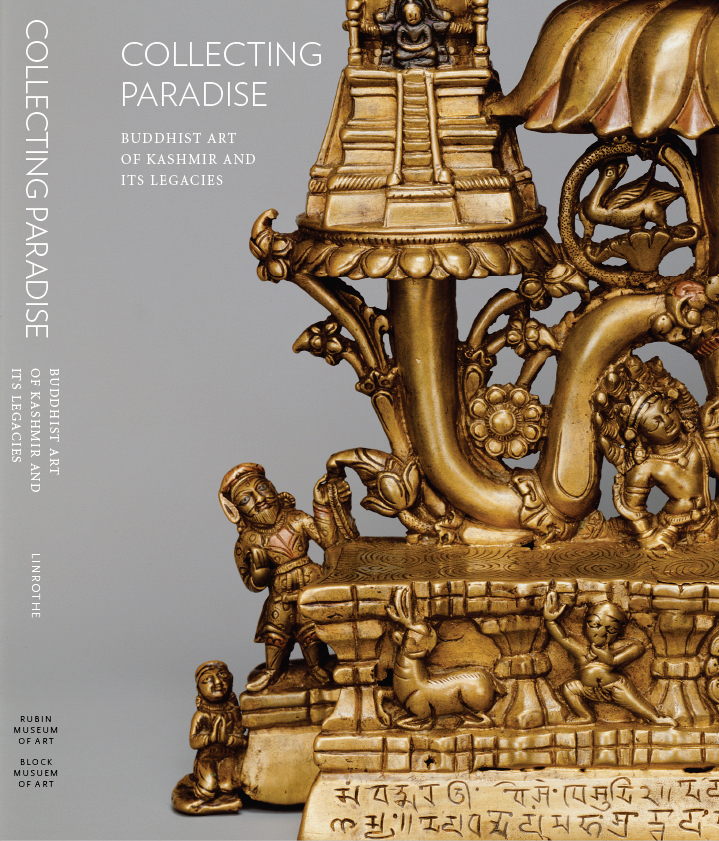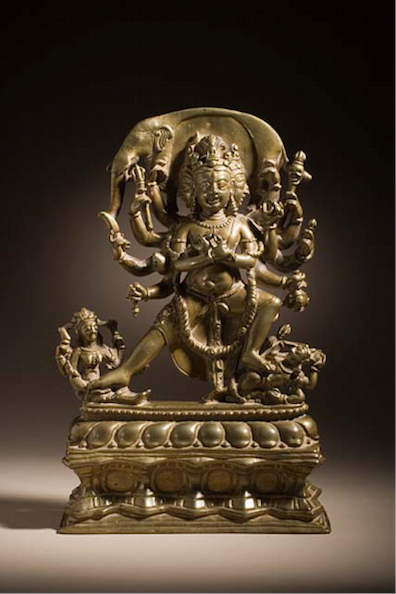Collecting ParadiseBuddhist Art of Kashmir and its Legacies
Rubin Museum
150 W. 17th St., NYC

Crowned Buddha Shakyamuni; Kashmir or Gilgit (present-day northern Pakistan); 8th century; brass with inlays of copper, silver, and zinc; Asia Society, New York: Mr. and Mrs. John D. Rockefeller 3rd Collection of Asian Art; 1979.044.
Kashmir, a region extending between present-day Pakistan, India, and China, was a vibrant center of cultural exchange where Buddhism flourished and artists created exceptional sculptures, paintings, and manuscripts. Beginning in the 5th and 6th centuries Kashmir and its art boasted international prestige and had significant cultural impact in the region, especially in the western Himalayas and west Tibet. Although these neighboring regions had radically different environments and cultures than Kashmir, Buddhism and art from Kashmir had profound influence there beginning in the 10th century.

